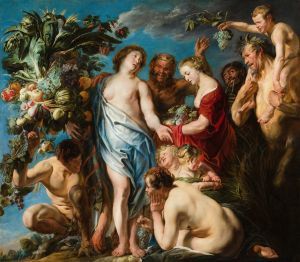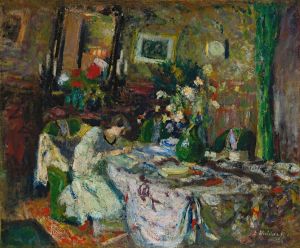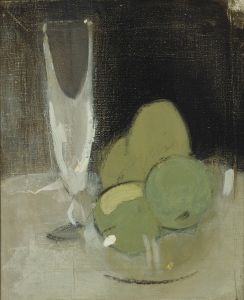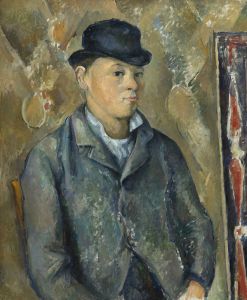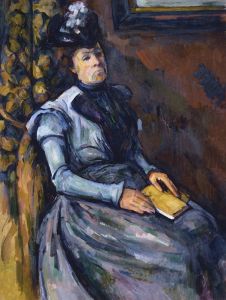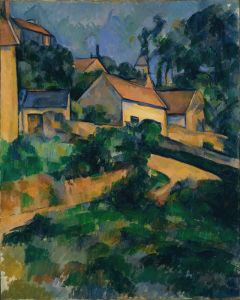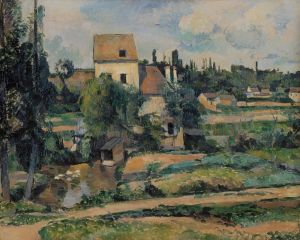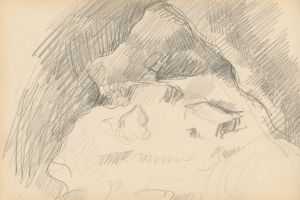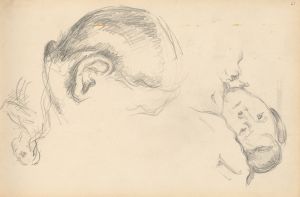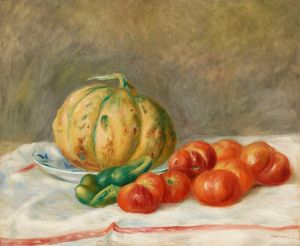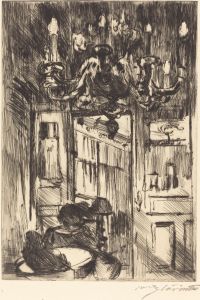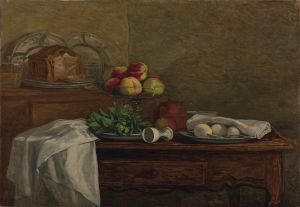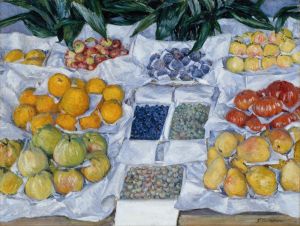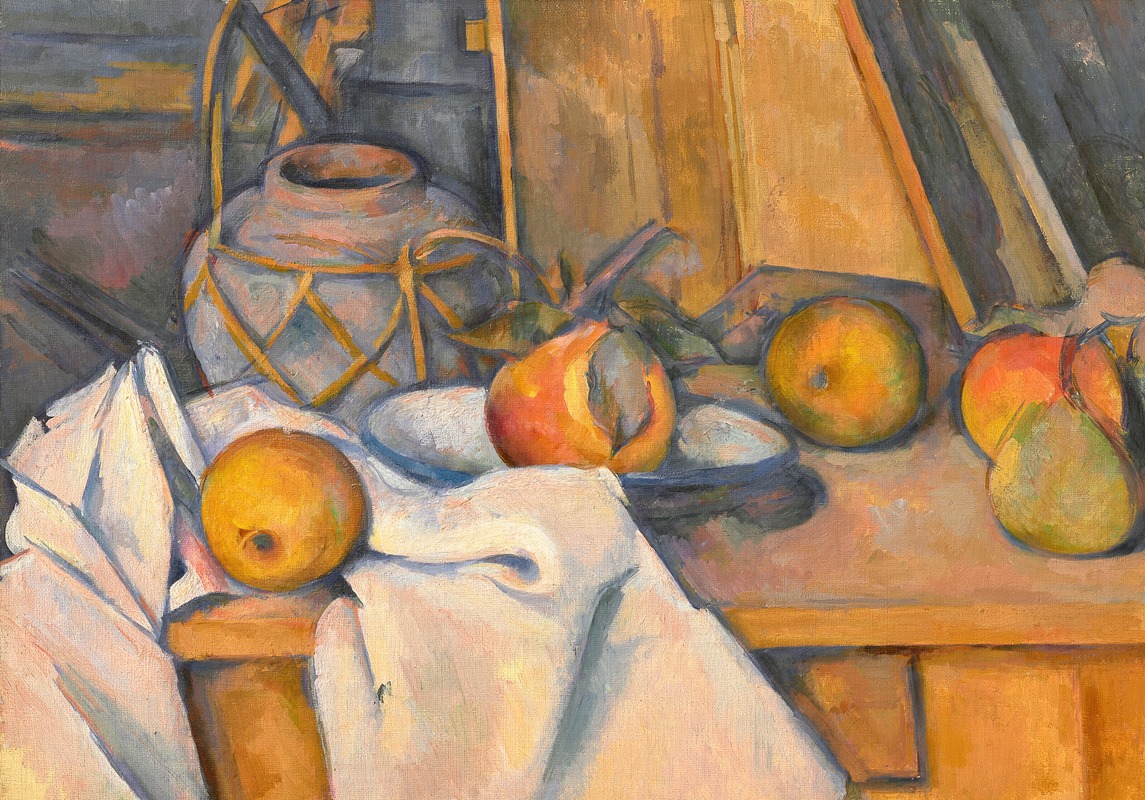
Fruits et pot de gingembre
A hand-painted replica of Paul Cézanne’s masterpiece Fruits et pot de gingembre, meticulously crafted by professional artists to capture the true essence of the original. Each piece is created with museum-quality canvas and rare mineral pigments, carefully painted by experienced artists with delicate brushstrokes and rich, layered colors to perfectly recreate the texture of the original artwork. Unlike machine-printed reproductions, this hand-painted version brings the painting to life, infused with the artist’s emotions and skill in every stroke. Whether for personal collection or home decoration, it instantly elevates the artistic atmosphere of any space.
Paul Cézanne's "Fruits et pot de gingembre" is a notable still life painting that exemplifies the artist's innovative approach to form and composition, which significantly influenced the development of modern art. Cézanne, a French Post-Impressionist painter, is renowned for his unique method of building form with color and his analytical approach to nature, which laid the groundwork for the transition from 19th-century artistic concepts to a radically different world of art in the 20th century.
"Fruits et pot de gingembre" features a composition of fruit and a ginger jar, a common subject in Cézanne's oeuvre. The painting is characterized by its balanced yet dynamic arrangement, where everyday objects are elevated to a subject of profound artistic exploration. Cézanne's still lifes are celebrated for their complex treatment of space, form, and color, and this work is no exception.
In this painting, Cézanne employs his characteristic brushwork, which is both deliberate and expressive. He uses color to construct form, applying patches of paint that suggest the volume and solidity of the objects depicted. This technique allows Cézanne to explore the interplay between the two-dimensional surface of the canvas and the three-dimensional perception of space. The fruits and the ginger jar are rendered with a sense of weight and presence, yet they also seem to vibrate with the energy of the brushstrokes.
Cézanne's approach to perspective in "Fruits et pot de gingembre" is particularly noteworthy. Unlike traditional linear perspective, which aims to create a single, unified viewpoint, Cézanne's perspective is more fluid and dynamic. He often presents multiple viewpoints within a single composition, a technique that would later influence the Cubists, such as Pablo Picasso and Georges Braque. This method challenges the viewer to engage with the painting in a more active manner, as the eye moves across the surface, piecing together the spatial relationships between the objects.
The choice of a ginger jar as a central element in the composition may reflect Cézanne's interest in the exotic and the decorative arts, which were popular in Europe during his lifetime. The jar, with its intricate patterns and glossy surface, contrasts with the organic forms and matte textures of the fruit, creating a visual tension that adds to the painting's complexity.
"Fruits et pot de gingembre" is a testament to Cézanne's belief that painting should not merely imitate reality but rather interpret it through the artist's vision. His work in still life, including this painting, demonstrates his commitment to exploring the fundamental principles of art—color, form, and composition—while pushing the boundaries of traditional representation.
Cézanne's influence on subsequent generations of artists cannot be overstated. His innovative techniques and philosophical approach to painting paved the way for the development of modern art movements, including Fauvism, Cubism, and Abstract Expressionism. "Fruits et pot de gingembre," like many of his works, continues to be studied and admired for its groundbreaking contributions to the art world.
In summary, "Fruits et pot de gingembre" by Paul Cézanne is a masterful example of the artist's revolutionary approach to still life painting. Through his use of color, form, and perspective, Cézanne transforms a simple arrangement of objects into a complex and engaging visual experience, solidifying his legacy as a pivotal figure in the history of art.





